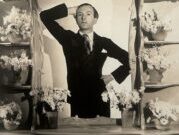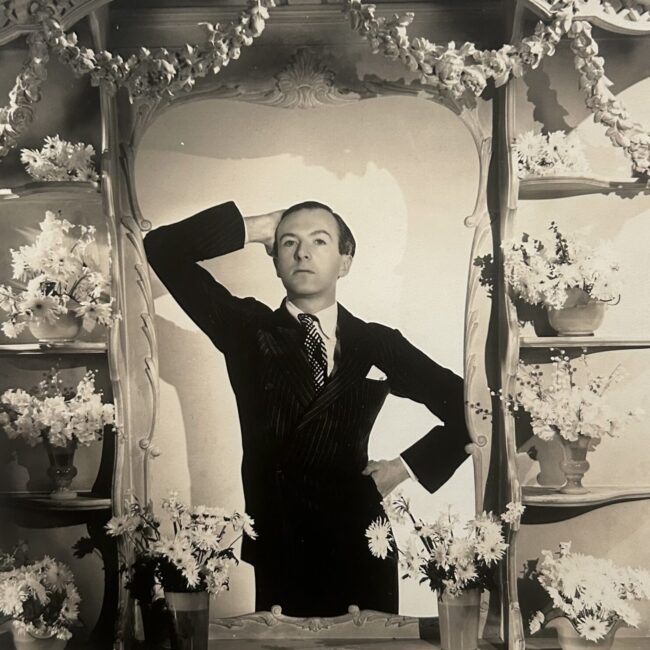
Glamour and queerness have long been interesting bedfellows. One of the pioneers of such fabulousness was Sir Cecil Beaton, the iconic British fashion, portrait, and war photographer, diarist, painter, interior designer, and costume and set designer. This autumn, the multiple Academy and Tony award-winning talent is being honoured by London’s National Portrait Gallery with a suitable, chic retrospective, Cecil Beaton’s Fashionable World, curated by Robin Muir, that focuses on the glamorous side of his work.
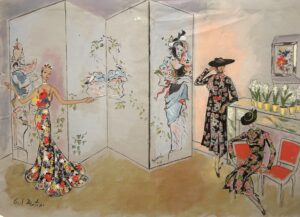 The show focuses on Beaton’s work with fashion, arguably his most successful work and covers the period from 1927, when the twenty-three-year-old was hired by British Vogue as a photographer, through to the pinnacle of his career in the early 1960s, when he designed the outfits for My Fair Lady. “The King of Vogue”, as he was known, was both photographer and photographed extensively. He was very fond of a self-timer and presented varied, but very controlled, images of himself to the world. He was a very focused social climber and carefully navigated his way from working for the family timber business through to photographing
The show focuses on Beaton’s work with fashion, arguably his most successful work and covers the period from 1927, when the twenty-three-year-old was hired by British Vogue as a photographer, through to the pinnacle of his career in the early 1960s, when he designed the outfits for My Fair Lady. “The King of Vogue”, as he was known, was both photographer and photographed extensively. He was very fond of a self-timer and presented varied, but very controlled, images of himself to the world. He was a very focused social climber and carefully navigated his way from working for the family timber business through to photographing 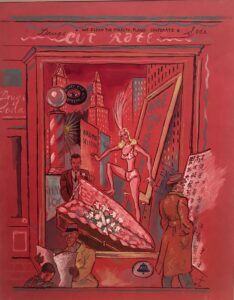 in the living rooms of Mayfair’s finest, helped by avant-gardist Edith Sitwell who took a shine to him and added him to her coterie. The first rooms of the show present this journey, including various self-portraits and those of his new-found friends. He quickly found his own bohemian avant-garde style which he maintained throughout his life. Stephen Tennant and Rex Whistler were other English aristos who took Beaton under their wings. This led on to photographing the Royal Family in the 1930s. As his career developed over the next two decades, Reddish House, Beaton’s country retreat in Wiltshire, became party central for a host of the great and the good including Truman Capote, Francis Bacon, Richard Avedon and Lucien Freud. Greta Garbo was another regular visitor and the bisexual Beaton had an on-off affair with her amongst many others with both men and women. The show includes great portraits of members of this group at his home.
in the living rooms of Mayfair’s finest, helped by avant-gardist Edith Sitwell who took a shine to him and added him to her coterie. The first rooms of the show present this journey, including various self-portraits and those of his new-found friends. He quickly found his own bohemian avant-garde style which he maintained throughout his life. Stephen Tennant and Rex Whistler were other English aristos who took Beaton under their wings. This led on to photographing the Royal Family in the 1930s. As his career developed over the next two decades, Reddish House, Beaton’s country retreat in Wiltshire, became party central for a host of the great and the good including Truman Capote, Francis Bacon, Richard Avedon and Lucien Freud. Greta Garbo was another regular visitor and the bisexual Beaton had an on-off affair with her amongst many others with both men and women. The show includes great portraits of members of this group at his home.
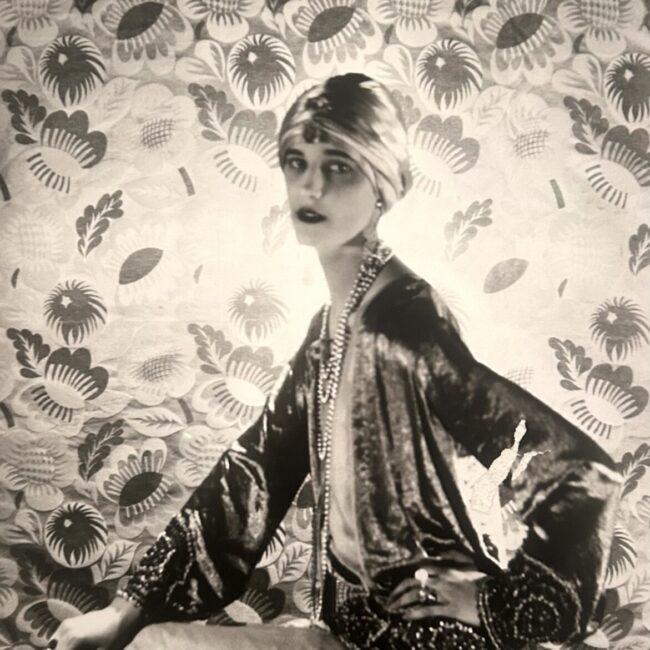 Beaton loved British aristocracy and cast his Vogue models from its finer-boned debutantes and titled women. This led on to work in Paris with arch rivals Coco Chanel and Elsa Schiaparelli. Jean Cocteau was also a friend and an influence with a playful surrealism an element of Beaton’s work. New York and work with American Vogue and Vanity Fair followed and Beaton developed his skill at beautiful illustration alongside his photography. This in turn led on to work in Hollywood and an additional string to his bow, costume making. The costumes for My Fair Lady earned Beaton two Oscars and the film was the pinnacle of his career. The show ends at this point. The forty years or so of work on display (over 200 exhibits) show a remarkable consistency in style whilst remaining very relevant for each decade. There’s a gentle, romantic intricacy to Beaton’s approach. A calm stillness that is also lux and fabulous. It’s an era that has long gone but that’s nice to hark back to, even though most of us would not have been included in it. Beaton’s work remains relevant to this day and is still often found referenced on the mood boards of fashion’s key designers. A dreamy show.
Beaton loved British aristocracy and cast his Vogue models from its finer-boned debutantes and titled women. This led on to work in Paris with arch rivals Coco Chanel and Elsa Schiaparelli. Jean Cocteau was also a friend and an influence with a playful surrealism an element of Beaton’s work. New York and work with American Vogue and Vanity Fair followed and Beaton developed his skill at beautiful illustration alongside his photography. This in turn led on to work in Hollywood and an additional string to his bow, costume making. The costumes for My Fair Lady earned Beaton two Oscars and the film was the pinnacle of his career. The show ends at this point. The forty years or so of work on display (over 200 exhibits) show a remarkable consistency in style whilst remaining very relevant for each decade. There’s a gentle, romantic intricacy to Beaton’s approach. A calm stillness that is also lux and fabulous. It’s an era that has long gone but that’s nice to hark back to, even though most of us would not have been included in it. Beaton’s work remains relevant to this day and is still often found referenced on the mood boards of fashion’s key designers. A dreamy show.
*****
| Cecil Beaton’s Fashionable World
9 October 2025 – 11 January 2026 |
| Queerguru’s Contributing Editor Ris Fatah is a successful fashion/luxury business consultant (when he can be bothered) who divides and wastes his time between London and Ibiza. He is a lover of all things queer, feminist, and human rights in general. @ris.fatah |

